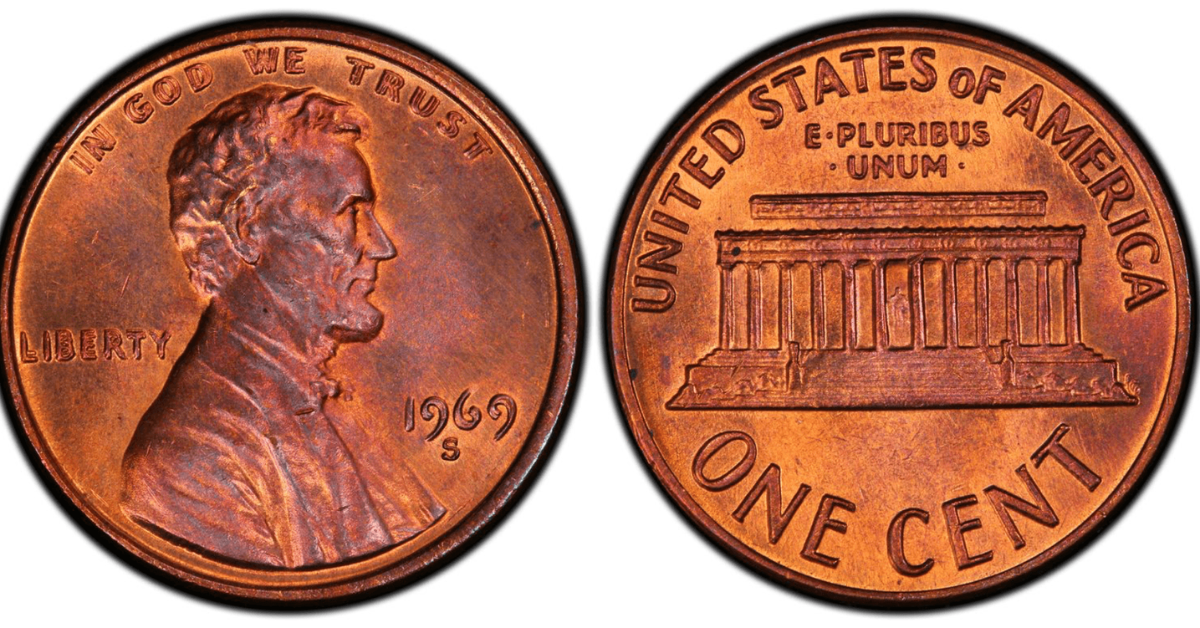Most Americans would not think twice before tossing a penny into a tip jar or letting one roll under a couch. But that tiny copper coin could be worth much more than one cent—perhaps even hundreds, or in rare cases, thousands of dollars. Collectors across the country continue to scout their pocket change in the hopes of finding one of several rare and valuable pennies. But how do you know which years are worth more than face value?
Understanding what makes a penny valuable takes a little knowledge of production errors, mint marks, and historical context. Below is a simple guide on how to check the value of your pennies by year.
The 1943 Steel Wheat Penny
Perhaps the most famous collectible penny is the 1943 steel wheat penny. During World War II, copper was needed for wartime manufacturing, so the U.S. Mint produced pennies using zinc-coated steel. These coins look silver-gray instead of the usual red-brown copper color.
More than a billion of these steel cents were produced, so most are not particularly rare. However, some 1943 pennies were mistakenly struck on copper planchets left over from the previous year. These rare errors are incredibly valuable—a 1943 copper penny can sell for over $100,000 at auction if authenticated and in good condition.
How to Check
Use a magnet. If your 1943 penny sticks, it is steel and worth only a few cents. If it does not stick, you may have a very rare coin on your hands. Consult a coin grading expert or professional dealer for confirmation.
The 1944 Steel Penny
Just like the rare 1943 copper penny, the 1944 steel penny is a product of error. In 1944, the Mint returned to producing pennies using copper. However, a small number of leftover steel blanks were accidentally used. These 1944 steel pennies are much rarer than the 1943 copper versions.
Only about 15 to 20 authentic examples are known to exist. Depending on the coin’s mint mark and condition, some of these have sold for over $100,000.
How to Check
Look for a 1944 penny that appears silver-colored instead of copper. Use a magnet to determine if it’s steel. If you find one, expert verification is a must.
The 1955 Doubled Die Penny
The 1955 doubled die penny is a classic example of a minting error that turned into a prized collector’s item. Due to a misalignment during the minting process, the coin appears to have doubled features, especially in the lettering on the obverse side (such as the word “LIBERTY” and “IN GOD WE TRUST”).
This error is easy to spot with the naked eye, which makes it one of the most sought-after error pennies. Genuine examples in good condition can fetch between $1,000 and $2,000 or more.
How to Check:
Use a magnifying glass to inspect the lettering. If the date and letters appear clearly doubled, it could be a real 1955 doubled die penny. Be aware that many fakes exist, so having it graded professionally is important.
The 1969-S Doubled Die Obverse Penny
Another celebrated error coin is the 1969-S doubled die penny. Like the 1955 version, this coin displays a doubling of the text on the front side. This error is less obvious than the 1955 version, and spotting it could require a close inspection or magnification.
Only a handful have been certified, making this coin extremely rare. Sales at auctions have reached over $35,000 for high-grade examples.
How to Check:
Look for a clear doubling of the words “LIBERTY” and “IN GOD WE TRUST.” The S mint mark indicates it was forged in San Francisco. Any potential match should be examined by a numismatic professional.
The 1970-S Small Date
This variation is more subtle and harder to recognize. The 1970-S Lincoln penny comes in two versions—a large date and a small date. The small date variety is much rarer and more valuable, especially in uncirculated condition.
One easy way to distinguish between the two is by examining the shape and position of the numbers in the date. On the small date, the top of the number “9” is nearly level with the “7” and “0.”
How to Check:
Compare the number shapes in the coin’s date against online photo guides. If it appears to be a small date version, it might be worth between $25 and $200 depending on its condition.
The 1982 Penny—Copper or Zinc?
In 1982, the U.S. Mint transitioned from using copper to zinc to save costs. Pennies made before mid-1982 were 95 percent copper and weighed 3.11 grams. Later ones were made mostly from zinc with a copper coating, weighing only 2.5 grams.
There are seven varieties of this coin, and in rare cases, a 1982 penny may have the wrong metal composition.
How to Check:
Weigh your 1982 penny using a precise digital scale. If it weighs 3.11 grams, it is mostly copper. The copper versions are more sought after by collectors. One particularly rare 1982-D small date copper penny sold for over $10,000.
Key Takeaway for Penny Hunters
While most pennies may not be worth more than a cent, a few rare finds from specific years can be worth hundreds or even thousands of dollars. The key to identifying valuable pennies lies in understanding mint errors, die variations, and metal content. Simple tools like a magnet, magnifying glass, and kitchen scale can be immensely helpful.
If you think you’ve found a valuable penny, consult a coin dealer or send it to a professional grading service like the Professional Coin Grading Service (PCGS) or Numismatic Guaranty Company (NGC) for authentication and valuation.
So the next time you’re handed a handful of coins as change, don’t dismiss those pennies so quickly—a small fortune might be sitting in your pocket.



